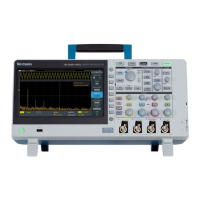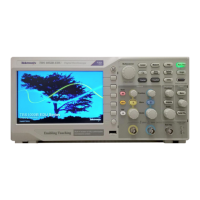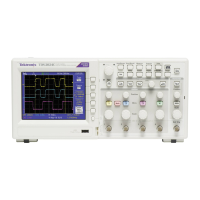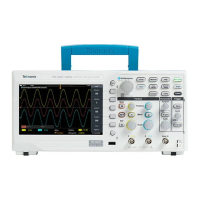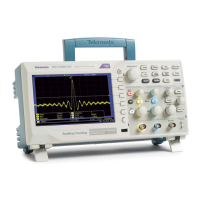The CURVe command transfers waveform data from an external device to the
instrument. The data is stored in the waveform location specified by
DATa:DESTination, starting with the data point specified by DATa:STARt. Only
one waveform can be transferred at a time. The waveform will only be displayed
if the reference waveform is displayed.
Refer to Waveform Commands for a description of the waveform transfer
process. Waveform command group on page 30
Group
Waveform
Syntax
CURVe {<Block>|<asc curve>}
CURVe?
Related Commands
DATa on page 89, DATa:STARt on page 92, DATa:STOP on page 93,
WFMInpre? on page 248, WFMInpre:BYT_Nr on page 250, WFMOutpre? on
page 257, HEADer on page 141
Arguments
<Block> is the waveform data in binary format. The waveform is formatted as:
#<x><yyy><data><newline>, where:
<x> is the number of y bytes. For example, if <yyy>=500, then <x>=3.
<yyy> is the number of bytes to transfer if samples are one or two bytes wide.
Use the WFMInpre:BYT_Nr command to set the width for waveforms
transferred into the instrument. Use WFMOutpre:BYT_Nr to set the width for
waveforms transferred out from the instrument.
<data> is the curve data.
<newline> is a single byte new line character at the end of the data.
<asc curve> is the waveform data in ASCII format. The format for ASCII data is
<NR1>[,<NR1>...] where each <NR1> represents a data point.
Examples
CURVe? with ASCII encoding, start and stop of 1 and 10 respectively, and a
width set to 1 might return the following ASCII data:
:CURVE 61,62,61,60,60,-59,-59,-58,-58,-59.
C commands
88 TBS2000 Series Programmer
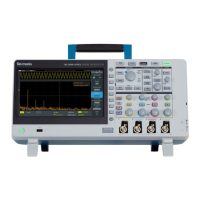
